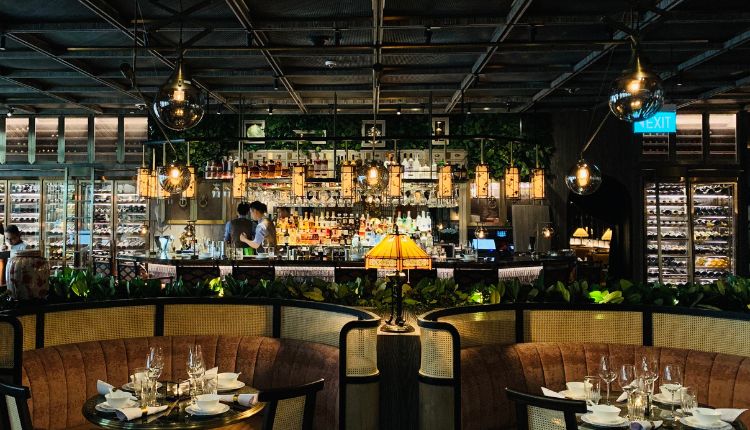Franchising a Restaurant? Here’s What to Know About the Supply Chain
You’ve likely heard people talk about the supply chain over the last few years. Disruptions because of the pandemic or boats stuck in canals affect everything from the source of materials to the plates your customers eat on.
Small-business owners have felt the pain of the supply chain. If you plan to franchise a restaurant, you’ll need to be prepared if you run into issues. Here’s what you need to know and how to set yourself up for success.
What Is the Supply Chain?
For restaurants, the modern supply chain encompasses the entire process of serving food at your business. It starts with the farmer or agricultural workers who grow the produce and animals that become the food you cook. There may be a middle producer, like a supplier you buy from. They deliver the products to your restaurant and you turn them into dishes for your customers to buy.
Each link in the supply chain is critical. One mishap in any section can throw off the entire system. It likely won’t just affect you but numerous others who depend on the producer, supplier or you for services.
The last three years have seen events contributing to supply chain crises. These obstacles include the pandemic, a surge in shipping demands and Russia’s invasion of Ukraine. A war nearly 5,000 miles away might not seem like it affects your restaurant, but today’s supply chain connects businesses worldwide. A conflict or mishap overseas can lead to higher prices for goods you thought were unrelated.
What Are Restaurateurs Responsible For?
Franchising a restaurant is an excellent business venture. You’ll get to provide fantastic food and put smiles on your customers’ faces. To have a successful restaurant, you should know these five duties you’ll be responsible for. Each link is critical in maintaining a smooth supply chain with few hiccups.
1. Sourcing Materials
It all starts with food. Someone has to produce the beef, bread and cheese for your burgers. The first step in your supply chain management is sourcing the materials. You’ll need to find suppliers who will give you the highest-quality products you can afford on your budget. Be picky with your suppliers and test them for the quality they produce. These items go a long way in determining your restaurant’s success.
Sourcing your materials can be difficult among supply chain issues. One way to mitigate things is by shortening your supply chain. Choose local growers and suppliers for two reasons. First, the food is likely to be fresher. Using Florida oranges in Florida is bound to taste better than if you live in the Northwest. Local suppliers may be cheaper if your location is close to their facilities.
2. Developing Supplier Relationships
Once you find the best suppliers, it’s critical to maintain a solid relationship with them. There are a few ways to manage ties with a supplier, starting with communication. You and the supplier should be transparent about your expectations. Agreeing on deadlines, prices, regulations and more ahead of time makes for a smooth process throughout the business relationship.
3. Transporting the Goods
The next part of your supply chain is transporting goods. After purchasing from a supplier, you’ll need to find a way to have your materials delivered to the restaurant. This process falls under the umbrella of logistics. Transportation is crucial because you’ll want the food to remain fresh when it arrives at your restaurant. That’s why choosing a local supplier is typically better than a company across the country.
You’ll sometimes need to obtain the materials yourself by driving. This step is common if your supplier is nearby and saves you time.
If you’re using company vehicles, be mindful of your drivers and find ways to cut costs through GPS navigation and innovative fuel practices. Another cost-saving measure is using a toll management system if your routes frequently encounter these roads. This saves restaurant owners time, money and ultimately stress.
4. Staffing Employees
A fully stocked freezer and bar are nice, but you’ll need employees to work hard and prepare the food. Your restaurant’s beating heart is your cooks, cashiers, wait staff, hosts and more. Implementing a targeted development system is critical to ensure your workers are ready for the job ahead. Your employees may face bumps in the beginning, but time and experience help everyone.
One product of the last few years has been the job market’s reshuffling. People have become pickier about where they want to work. Turnover in the restaurant industry can be high, so get creative with incentives to attract good talent and persuade them to stay.
For example, start by letting employees influence their schedule. In a 2022 survey, 94% of workers said they desire flexibility in the workplace and decide when they work. Other perks you can offer are increased benefits, advancement opportunities, professional development and referral programs for hires.
5. Distributing Products
The last part of your supply chain is distribution. This link in the chain includes delivering food to customers, whether through wait staff, carryout or delivery. Your patrons keep your restaurant open, so pay attention to what they desire in their dining experience.
Add live music, ambient lighting, vintage decorations and other fixtures that will liven up the place. Also, consider keeping up with industry trends and emphasizing delivery services to grow your restaurant. Online food delivery nearly doubled its market share because of the pandemic, and it’s only growing from here.
Staying Smooth With Your Supply Chain
Franchising a restaurant is challenging but rewarding work. Technology makes things easier, but you can also run into issues with the supply chain. Do what you can to control the supply chain and mitigate problems.



Comments are closed.